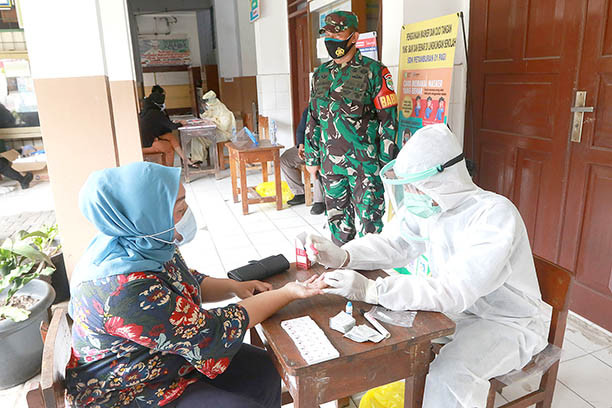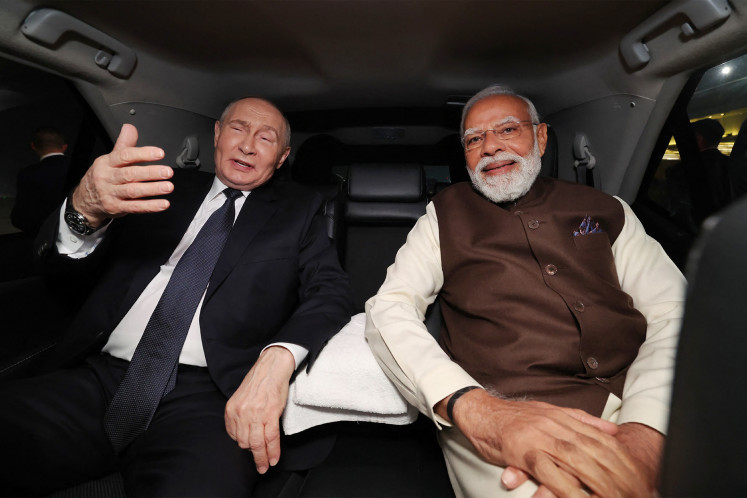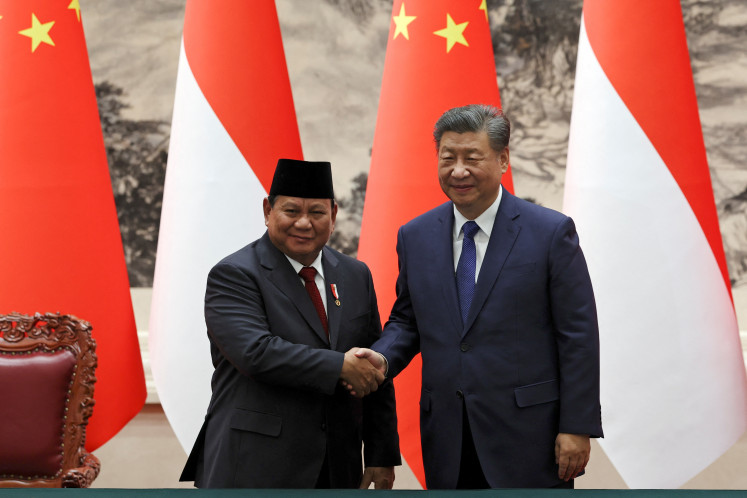Popular Reads
Top Results
Can't find what you're looking for?
View all search resultsPopular Reads
Top Results
Can't find what you're looking for?
View all search results[INSIGHT] Compassion fatigue: COVID-19 ticking time bomb
The World Health Organization has described what has turned out to be a global phenomenon: pandemic fatigue.
Change text size
Gift Premium Articles
to Anyone
T
he fact that Indonesia’s latest daily COVID-19 record (8,369 new cases on Dec. 3) comes as no surprise to many people is a bitter pill to swallow. The national COVID-19 task force said a lag in data synchronization was the main cause of the surge. However, setting the data collection issue aside, the staggering number alone is a poignant signal about the COVID-19 crisis in the country.
Looking back at the ubiquitous violations of health protocols during regional election campaigns and long-weekend holidays and at the recent crowded gatherings to welcome Islam Defenders Front (FPI) leader Rizieq Shihab back to Indonesia, it seems like it will not be long until we see another record broken.
Recent data shows that the COVID-19 case surge has been accompanied by a rise in health protocol violations. The COVID-19 task force has said that only 9 percent of the 512 regencies and municipalities in the country are complying with the mask-wearing rule, and barely 4 percent are complying satisfactorily with the physical distancing rule.
The World Health Organization has described what has turned out to be a global phenomenon: pandemic fatigue. This is a natural response to the prolonged nature of the crisis and the associated inconveniences and hardships. If left unaddressed, this seemingly natural coping mechanism will almost certainly threaten our control over COVID-19 transmission.
From the communication perspective, relentless information and the news cycle in the digital sphere have exacerbated pandemic fatigue. The phenomenon of information glut and the erosion of audiences’ emotional response was raised by journalist and scholar Susan Moeller long before the COVID-19 pandemic hit under a slightly different name: compassion fatigue.
In a nutshell, Moeller contends that when war, famine or even pandemics are constant, they become boring. This causes media to seek more dramatic, sensational or even violent content to draw in and retain audiences.
In addition, Charles Figley, a renowned psychologist and traumatic stress researcher, notes that numbness is brought about by a sense of hopelessness about our inability to solve a problem or to take control of an issue.
Keeping in mind the complexity and the breadth of COVID-19’s socioeconomic impact, then, how we can intervene in this vicious cycle of demotivation and how we keep the public motivated to adhere to health protocols while widespread public vaccination remains some way off?
New York Times columnist Nicholas Kristof popularized story personification, triumph over adversity, a minimal use of statistics and calls to action as ways to address compassion fatigue within media discourse. Some of these techniques have materialized on the Indonesian media scene amid ghastly footage of cemeteries to mind-boggling comments from policymakers or public figures.
The grassroots program Jaga Tangga (Neighbors Care for Each Other) coverage demonstrates how focusing on community involvement and triumph over independent COVID-19 management can instill public confidence and gently alleviate that sense of despair. It is important to constantly remind the public that they can still determine their role throughout this pandemic.
We have also seen the employment of the story personification approach, when journalists decide to put a “human face” on the issue and use a compelling storytelling technique to draw the audience’s attention.
Since the beginning of the pandemic, journalists have been presenting data and stories about medical workers, patients and survivors from various angles. As expected, countless updates began to come from every direction; hence, efforts to secure a long-lasting impact became more and more difficult.
Selecting individual stories that can best represent large societal or economic problems can be a more potent alternative. We have seen that some of the most impactful movements have also been leveraging robust and impactful stories, for instance, George Floyd’s death in the #BlackLivesMatter campaign.
While statistics remain important, the focus should be on local struggles and success stories to retain public awareness of the severity of the COVID-19 pandemic, as well as to generate public support by harnessing the power of emotions.
That being said, the solution to compassion fatigue should not rely on communication practices alone. It should be supported with concrete actions by stakeholders to further validate public compassion in the first place. After all, communications professionals must be well aware of Doorley and Garcia’s philosophy, that a good reputation, including trust, is a result of a well communicated performance. Hence, the central government and local administrations play a pivotal part in bolstering public trust in public institutions, which will influence public adherence to the health protocols.
The simultaneous regional elections on Wednesday should serve as an imminent test, especially with 2,126 health protocol violations recorded by the Elections Supervisory Agency (Bawaslu) throughout the campaign period. The capacity of local governments and the regional elections commission (KPUD) to ensure health protocol compliance during voting should be closely watched.
Furthermore, the recent COVID-19 social aid scandal involving Social Affairs Minister Juliari Batubara will gauge the government’s competency and values – the two fundamental building blocks of institutional trust. The graft case further puts the government’s reputation on the line.
The government needs to see that the public’s declining motivation to follow health rules is a ticking time bomb. But this does not mean that the government can’t get its act together and employ a more strategic approach to diffusing the risk.
----------
Senior consultant at Kiroyan Partners, with core expertise in political communication discourse. The views expressed are her own.










